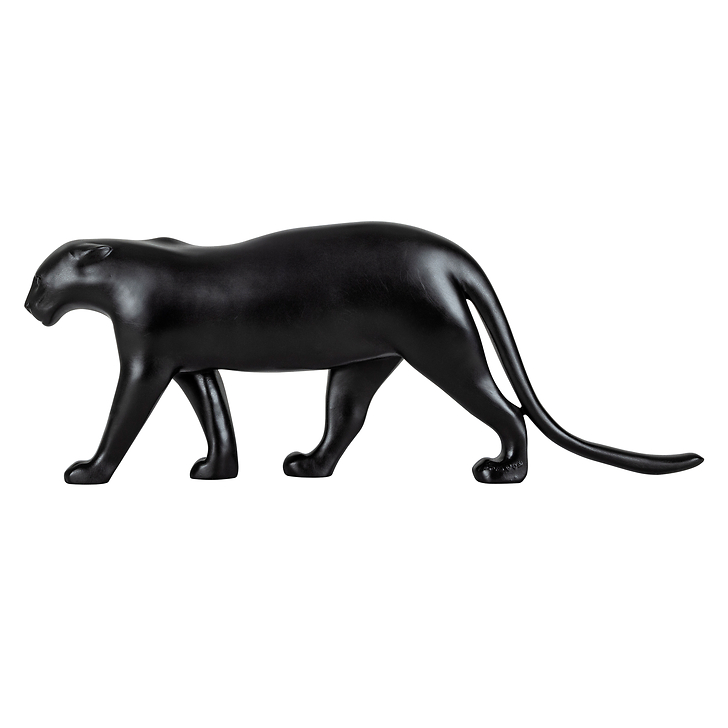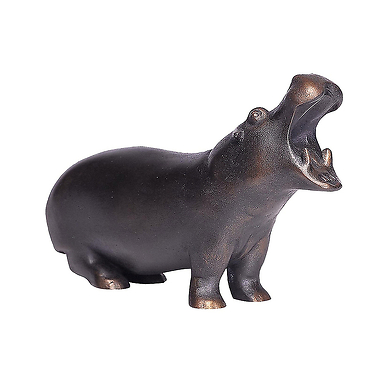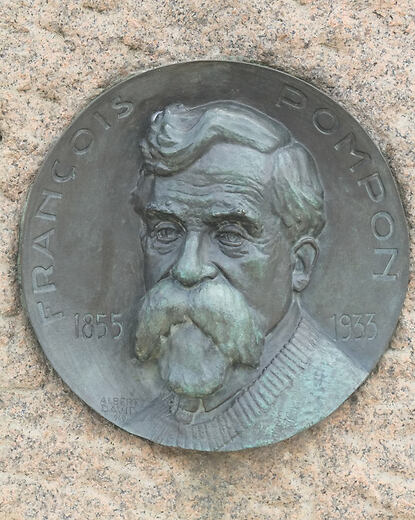Sculpture Black Panther François Pompon - Small size
RF006151
Reproduction with hand patina. Mold made from an impression of the original work exhibited at the Musée d'Orsay.
Hand-patinated reproduction. Mould made from an impression of the original work exhibited at the Musée d'Orsay.
Observing animals at the Jardin des Plantes zoo, François Pompon was able to...
Read more
Reproduction with hand patina. Mold made from an impression of the original work exhibited at the Musée d'Orsay.
Hand-patinated reproduction. Mould made from an impression of the original work exhibited at the Musée d'Orsay.
Observing animals at the Jardin des Plantes zoo, François Pompon was able to transcribe their movements in his sculptures, eliminating the modeling characteristic of his master and employer, Auguste Rodin. The panther's slender profile lends itself particularly well to this simplification of form, as does the choice of monochrome materials: black marble or bronze with a brown patina.
He executed decorative figures and caryatids for the façade of the Hôtel de Ville, then joined Rodin as a practitioner, where he remained for fifteen years. He had to wait until the age of 67 and the Salon of 1922 to achieve success with "L'ours blanc".
The son of a cabinetmaker, François Pompon entered the École des Beaux-Arts in Dijon after working with stone and wood in Saulieu to earn his living.
He studied architecture and sculpture, and acquired some rudimentary engraving skills. In 1874, he moved to Paris, where he came into contact with the contractors who were transforming the Paris of the Second Empire.
Best known as an animal sculptor, he exalts the lyricism of light in his polished surfaces and economy of detail. The sculptor chose to represent the animal very simply, concentrating on its main lines.
After being conserved at the Jardin des Plantes, the three hundred pieces bequeathed by F. Pompon have been transferred to the Musée des Beaux-Arts in Dijon.
Close
Sold by GrandPalaisRmn





















